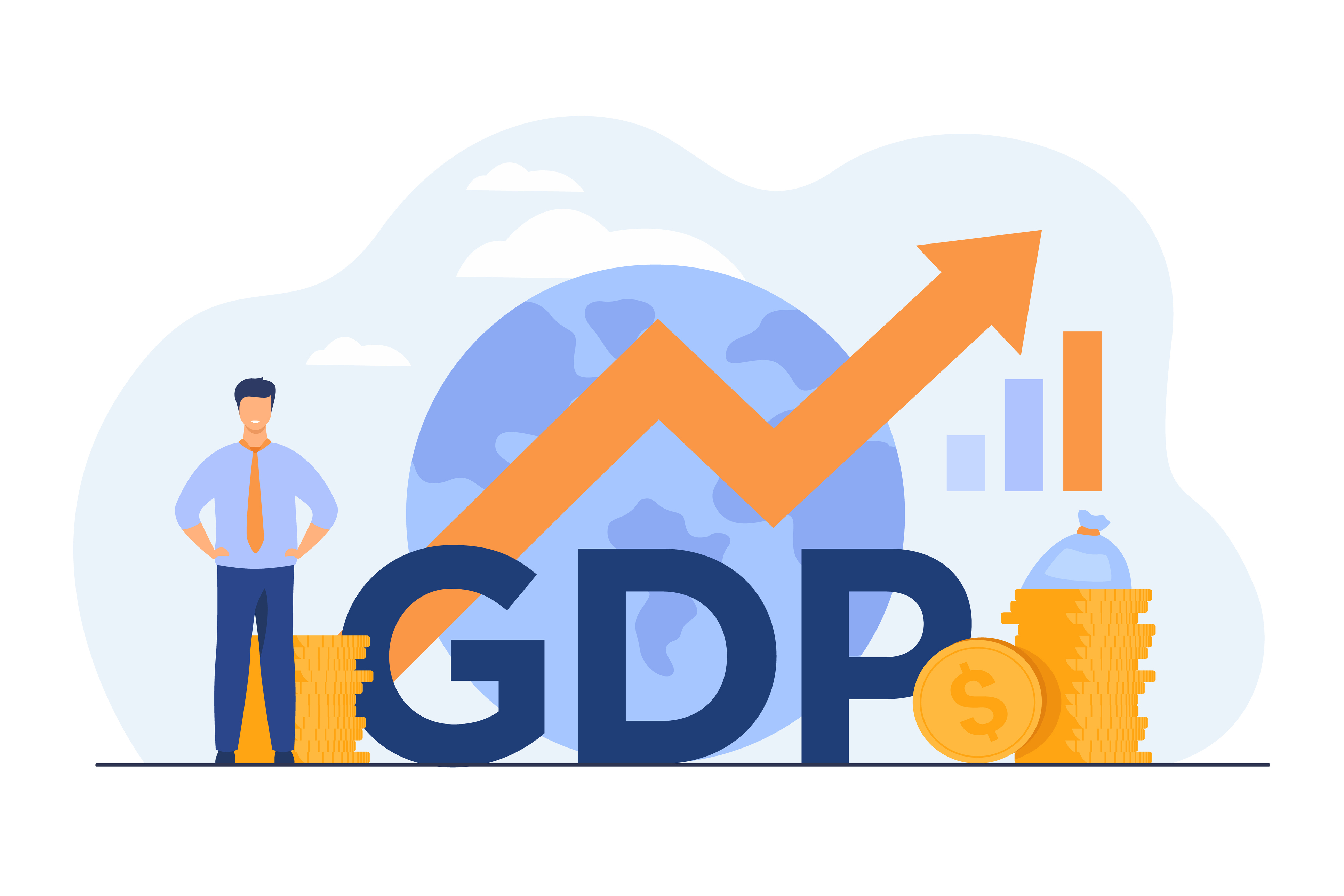
Stronger quarter ends sub-par year
A sharp surge in inventories helped U.S. Gross Domestic Product (GDP) grow by 3.0 percent in the final quarter of 2011, according to the latest figures from the U. S. Bureau of Economic Analysis. The Q4 GDP increase, coming after a string of meager quarterly gains, is the best growth in the past year and a half. The resulting annual growth rate for 2011 GDP averages out to an increase of 1.7 percent, the slowest growth for any non-recession year in the post war period.
Propelled primarily by a sharp surge in additions to inventories, U.S. Gross Domestic Product (GDP), the measure of the nation's output of goods and services, grew by 3.0 percent in the final quarter of 2011, according to the latest figures from the U. S. Bureau of Economic Analysis. The third look at fourth quarter growth (released March 29) was unchanged from the previous estimate. GDP growth figures represent inflation-adjusted changes from the prior quarter, expressed at an annualized rate.
The Q4 GDP increase of 3.0 percent, coming after a string of meager quarterly gains, is the best growth in the past year and a half. More than one half of the GDP percentage increase was accounted for by additions to inventories, basically goods produced but not sold. Consumer spending picked up in the fourth quarter, growing by 2.1 percent, compared to an average of 1.5 percent in the first three quarters of the year. Helped by warmer weather, residential construction jumped by 11.6 percent, after growth of only 1.3 percent in Q3.
Table 1: Annualized Real GDP Growth Rates by Quarter (%)
| 2009-Q4 | 2010-Q1 | 2010-Q2 | 2010-Q3 | 2010-Q4 | 2011-Q1 | 2011-Q2 | 2011-Q3 | 2011-Q4 |
| 3.8 | 3.9 | 3.8 | 2.5 | 2.3 | 0.4 | 1.3 | 1.8 | 3.0 |
The resulting annual growth rate for 2011 GDP averages out to an increase of 1.7 percent. Economy-watchers with a historical bent will note that this is the slowest growth for any non-recession year in the post war period. Although the 1.7 percent growth for 2011 is sub-par, it doesn't look all that bad when compared to the average annual growth of a mere 1.6 percent for the past decade (2001 ? 2010). GDP fell for two consecutive years in the Great Recession (2008 and 2009), pulling down average annual growth for the period.
The 3.0 percent GDP increase in 2010, the first full year of the current recovery, was the fastest annual growth recorded since 2005. Overall, there have been only three years with annual growth of 3.0 percent or greater since 2000.
Economic Drivers 2011 vs. 2010
After rising by 3.0 percent in 2010, why did GDP growth slow down in 2011? The explanation for the performance of the whole depends on the component parts.
The major positive and negative influences of components on GDP percentage growth for 2010 and 2011 are shown in the accompanying table.
In 2010, businesses contributed almost two percentage points to GDP growth as they rebuilt inventories and added to plant and equipment. In 2011, the combined influence of those two components declined to 0.6 percent. Federal outlays boosted growth in 2010, but were a negative drag in 2011.
Table 2: Percent Contribution of Main Components of Real GDP
| GDP Components | 2010 | 2011 |
| Gross Domestic Product | 3.0% | 1.7 % |
| Personal Consumption Expenditures | 1.44 | 1.53 |
| Business Fixed Investment | 0.32 | 0.81 |
| Change in Private Inventories | 1.64 | -0.21 |
| Net Exports | -0.51 | 0.05 |
| Federal Government | 0.37 | -0.17 |
| State and Local Government | -0.23 | -0.28 |
Source: U.S. Bureau of Economic Analysis, Gross Domestic Product: Fourth Quarter 2011 (Third Estimate), March 29, 2012
Outlook
Extrapolating from the figures in Table 2 for 2011, we can project 2012 growth in the range of about 2.0 to 2.5 percent based on observed trends and current economic conditions.
Consumer spending again will contribute approximately 1.5 percent to the overall GDP increase and Gross Investment might add another 1.0 percent, depending on the strength of the residential building component. Estimating net exports as basically a wash with zero influence, decreases in federal, state and local government spending have the potential to reduce growth by about one third of a percentage point. The result is growth of anywhere from 2.0 percent up to 2.5 percent at the most. The effect on unemployment will be minor, leaving the unemployment rate still above 8.0 percent by the end of the ear.
Latest news
- Artificial intelligence in business master's degree helps Nathan Merriman combine business strategy with technology
Nathan Merriman (MS-AIB '25) had been working in business for a few years when he learned about…
- How the Executive MBA empowered Scott Gates to be a mission-driven leader
Scott Gates (BS Marketing '04, Executive MBA '15) had a very positive experience during his…
- Fall 2025 W. P. Carey Dean's Medalists honored at celebratory luncheon
Top grads from each program recognized for academic excellence and lasting impact on the ASU…